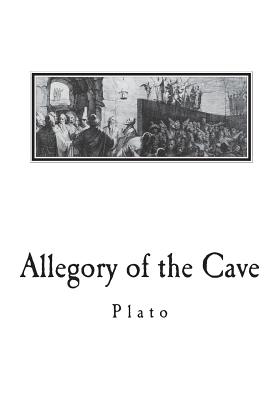Allegory of the Cave: From The Republic by Plato

Allegory of the Cave: From The Republic by Plato
Allegory of the Cave by Plato from The Republic by Plato and translated by Benjamin Jowett. The Allegory of the Cave, or Plato's Cave, was presented by the Greek philosopher Plato in his work Republic to compare "the effect of education and the lack of it on our nature". It is written as a dialogue between Plato's brother Glaucon and his mentor Socrates, narrated by the latter. The allegory is presented after the analogy of the sun and the analogy of the divided line. All three are characterized in relation to dialectic at the end of Books VII and VIII. Plato has Socrates describe a group of people who have lived chained to the wall of a cave all of their lives, facing a blank wall. The people watch shadows projected on the wall from objects passing in front of a fire behind them, and give names to these shadows. The shadows are the prisoners' reality. Socrates explains how the philosopher is like a prisoner who is freed from the cave and comes to understand that the shadows on the wall are not reality at all, for he can perceive the true form of reality rather than the manufactured reality that is the shadows seen by the prisoners.
PRP: 53.86 Lei
Acesta este Pretul Recomandat de Producator. Pretul de vanzare al produsului este afisat mai jos.
48.47Lei
48.47Lei
53.86 LeiLivrare in 2-4 saptamani
Descrierea produsului
Allegory of the Cave by Plato from The Republic by Plato and translated by Benjamin Jowett. The Allegory of the Cave, or Plato's Cave, was presented by the Greek philosopher Plato in his work Republic to compare "the effect of education and the lack of it on our nature". It is written as a dialogue between Plato's brother Glaucon and his mentor Socrates, narrated by the latter. The allegory is presented after the analogy of the sun and the analogy of the divided line. All three are characterized in relation to dialectic at the end of Books VII and VIII. Plato has Socrates describe a group of people who have lived chained to the wall of a cave all of their lives, facing a blank wall. The people watch shadows projected on the wall from objects passing in front of a fire behind them, and give names to these shadows. The shadows are the prisoners' reality. Socrates explains how the philosopher is like a prisoner who is freed from the cave and comes to understand that the shadows on the wall are not reality at all, for he can perceive the true form of reality rather than the manufactured reality that is the shadows seen by the prisoners.
Detaliile produsului









